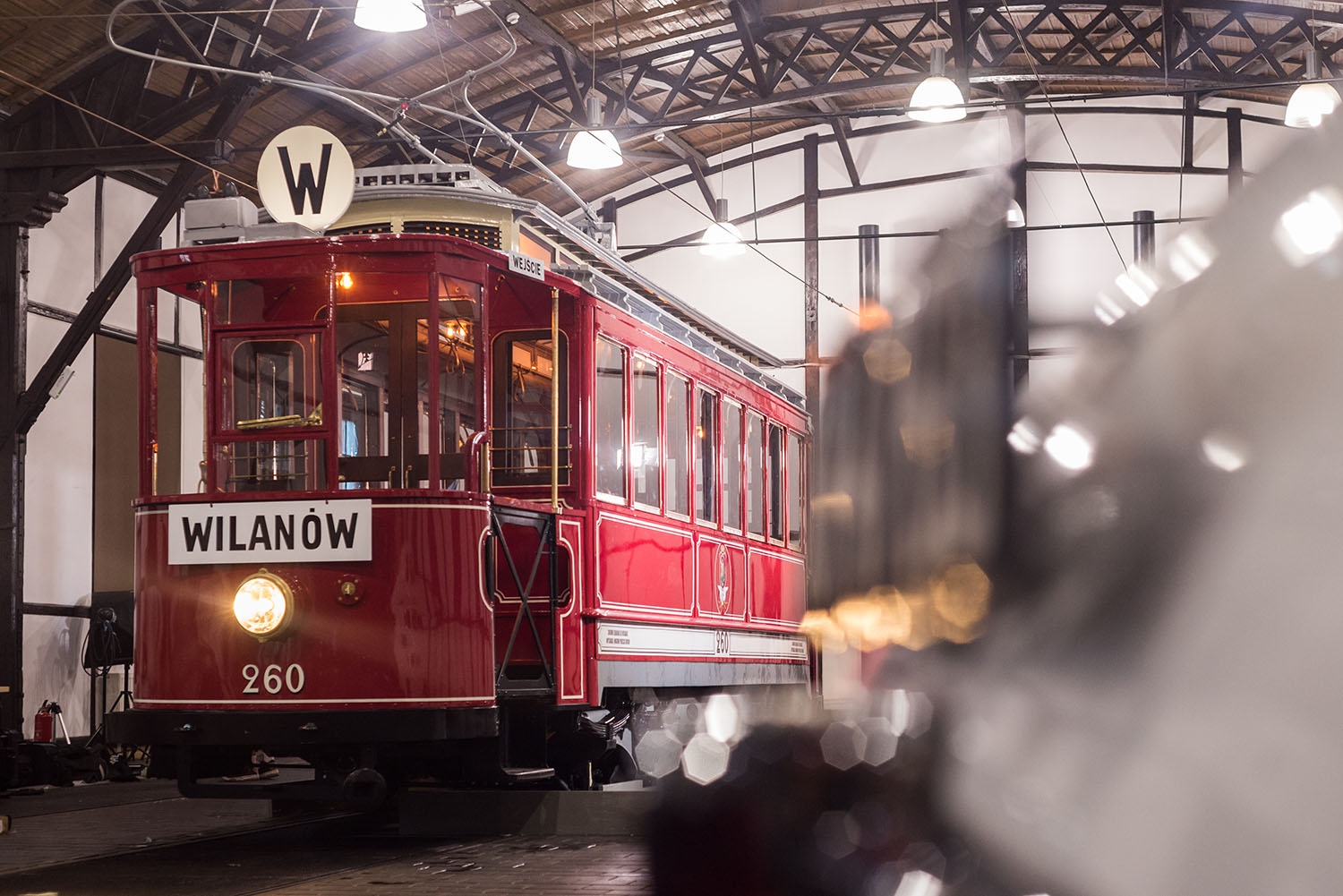Presentation of historical tram carriages
Presentation of historical tram carriages
When visiting the permanent exhibition, make sure to come to Hall F, where historical tram carriages are presented.
The exposition is a reference to the historical function of the Tram Depot, which is over 100 years old and was Kraków’s first depot for standard-gauge trams. This means that the place of exposition is special itself, providing excellent natural background for the exhibits.
As for the exhibits themselves, of particular note is type C railcar number 260 – the first Polish tram. Can a technological historical artifact be a symbol of Polish engineering and the country’s reconstruction after regaining independence? Absolutely, since such artifacts are a great way to tell a story and engineering successes often mean a breakthrough that sets a new direction for development. Especially if their story is so fascinating.
After the end of World War I, Poland regained independence, but the country was in ruin, and so was the condition of public transport in the capital. It was a result of the policy of the partitioning powers, which was focused on exploitation and often pure destruction. In the meantime, tram lines were expanded and new rolling stock was urgently required. This is why in 1925, the Warsaw Municipal Trams Company placed an order for 30 railcars with Lilpop, Rau & Loewenstein. The company was Polish and just a few years before that, it had managed to repair some of the machines and launch production. It was one of its first large contracts. Symbolic, as Polish industry was rising from the ruins and spreading its wings.
Type C railcars could be found in service in Warsaw as late as 1956. Unfortunately, only two examples have survived until today. Today, they are not only historical artifacts, but also unique objects. One of them is held by the Museum of Engineering and Technology. Because of its poor technical condition, its restoration required extensive financing. However, it was possible thanks to an EU project.* This was the largest and most expensive restoration project in the history of the Museum. The type C railcar has been brought back to its former glory and is currently a jewel in the Museum’s collection. We recommend watching a two-part video showing how the restoration process:
- Part 1: The difficult art of restoration
- Part 2: An exhibit returns to the Museum
Hall F presents historical artifacts from two collections:
The collection of the Museum of Engineering and Technology in Kraków:
- Type C railcar, Lilpop, Rau & Loewenstein, 1926
- BT-1 towing car, number G-051, Stadtischen Strassenbahn Breslau, Linke-Hofmann-Werke AG, approx. 1920
- Horse-drawn tram, PW1-112 summer tram, Compagnie General des Chemins de Fer Secondier of Belgium, Municipal Tram Repair Facility, undercarriage: 1882, body: 1965
The collection of the Municipal Transport Company in Kraków:
- ND flatcar, Sanok Railway Car Factory/Municipal Transport Company, 1948–1951 (rebuilt in 1986)
- Type 102N railcar, Chorzów Steel Structures Production Facility “KONSTAL,” 1969
- Type N railcar, Chorzów Steel Structures Production Facility “KONSTAL,” 1954
- Type SN4 railcar, Gottfried Linder Waggonbau, Ammendorf, 1910
- Type SN1 railcar, Galicia Society for the Construction of Railway Cars and Machines of Sanok, 1912
The exhibition can be visited as part of the admission to the permanent exhibition.
Opening hours, ticket prices, and discounts: CLICK HERE











